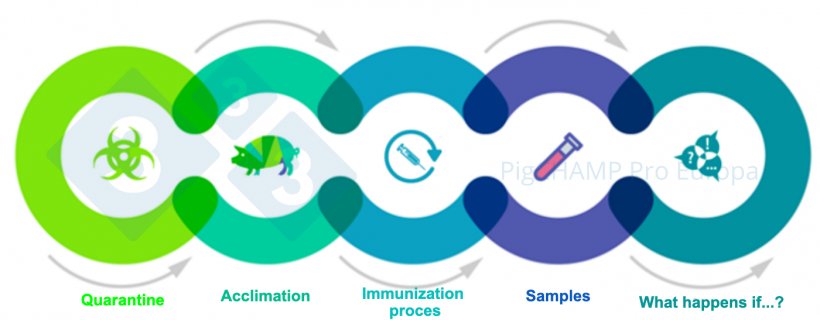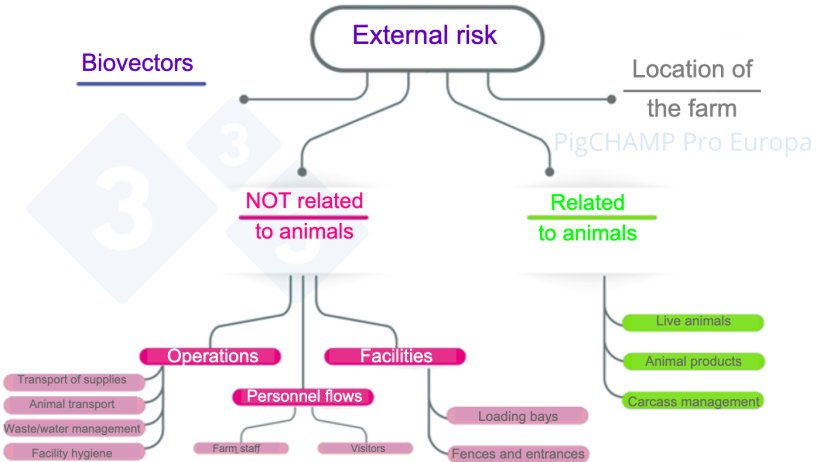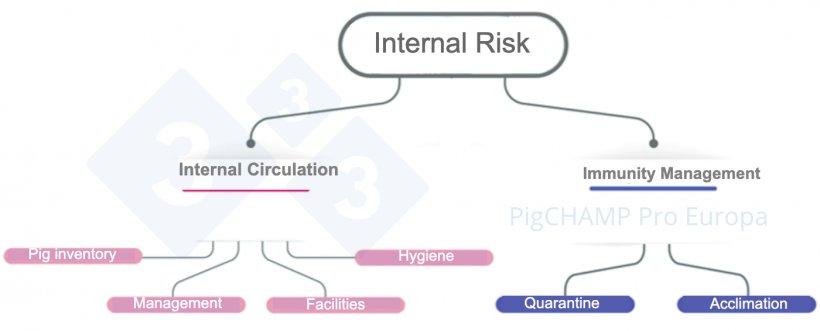The swine industry is facing new challenges every day where biosecurity becomes more and more important to protect farms against external pathogens. We can define biosecurity as a set of working measures and protocols for action in different situations adapted to the needs and situation of each farm, although unfortunately, in some cases it is reduced to a to-do list.
One of the best options to know how biosecurity stands is to do an audit, where a specialized veterinarian assesses the current situation and can propose additional measures. A biosecurity audit consists of an objective inspection and evaluation in a cross-sectional and complex process, which verifies the current measures and points out the weak points of the system, which can be a single farm or a company that integrates different phases of the process.

The audit process consists of four main phases:
- Collecting preliminary information
- Biosecurity survey
- Visiting the farm/company
- Final diagnostic report
Before any assessment, all the information possible must be obtained in order to fully understand the farm to be audited, to assess the risks "a priori" and to draw up a map of the main critical points. This task becomes the main starting point, and for this, it is essential to have at least:
- Detailed plans of the farm to identify the entrances to each building
- Current health situation in order to be able to control the internal spread of diseases
- Current internal and external biosecurity protocols
- Gilt acclimation and immunization protocols including, if possible, entry planning, vaccination schedule, duration of acclimation, sampling, and other protocols such as the "what ifs".

Figure 1. Key interconnected aspects that should be understood prior to the visit.
The second phase is probably the best known today, since for several years now it has been a common practice for companies to carry out biosecurity surveys. Generally, it is best to conduct this survey during a visit to the farm with the person in charge or in a meeting beforehand, since it makes it possible to work deeper into some questions and detect possible faults that would go unnoticed if it were not carried out in person. This tool provides a numerical evaluation in the different categories that will serve as a basis for proposing possible solutions in the final report.
The third phase consists of personally knowing the system to be evaluated, without any intermediaries. First of all, it should be noted that there is always a risk associated with the location of the farm itself, as well as the risk related to receiving visitors, which can be assessed "in situ". In addition, as for the external risk, we must determine which risks are animal-related (entry of replacement animals or other animals, shipments, and loads to the slaughterhouse, etc.) and which ones are not related to animals (flow of external personnel, supplies, and other operations). Figure 2. Diagram to analyze the main external risk factors during the farm visit.
Regarding the internal risk, it is necessary to know the personnel working there, the internal flow of workers and animals, the facilities, and whether there are measures to control the spread of diseases. The cleaning and disinfection protocols of the facilities must also be reviewed, since they are the main pillar of biosecurity. Apart from management and work routines, it is of utmost importance to understand the vaccination plan for the animals: at what age it is administered, in which groups, and how it is carried out.

Figure 3. Diagram to analyze the main internal risk factors during the farm visit.
After analyzing this information, an objective picture of the farm is drawn up to detect any anomalies in biosecurity and to identify the points of greatest risk. The final report should include, as a minimum:
- Results of the biosecurity survey, detailing the scores in each category, which translates as risk level.
- Biosecurity diagnosis after system evaluation.
- Prioritized recommendations for the short, medium, and long term.
Figure 4. Proposal for ring biosecurity included in the final report as a medium- to long-term objective.





